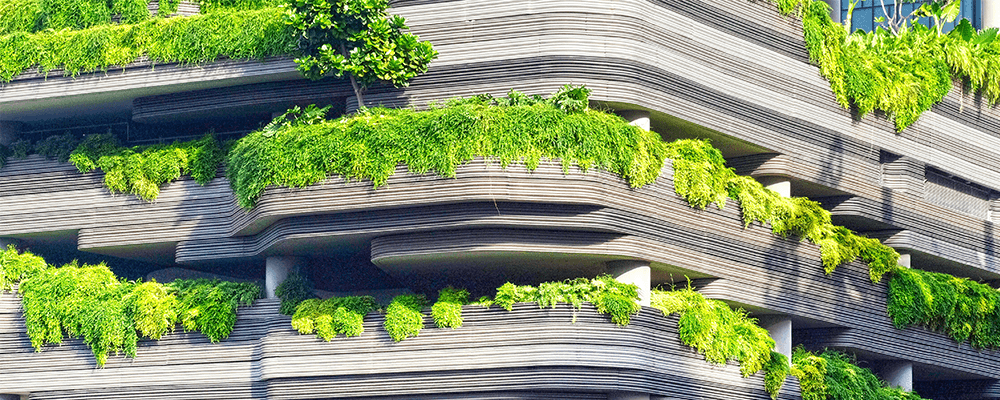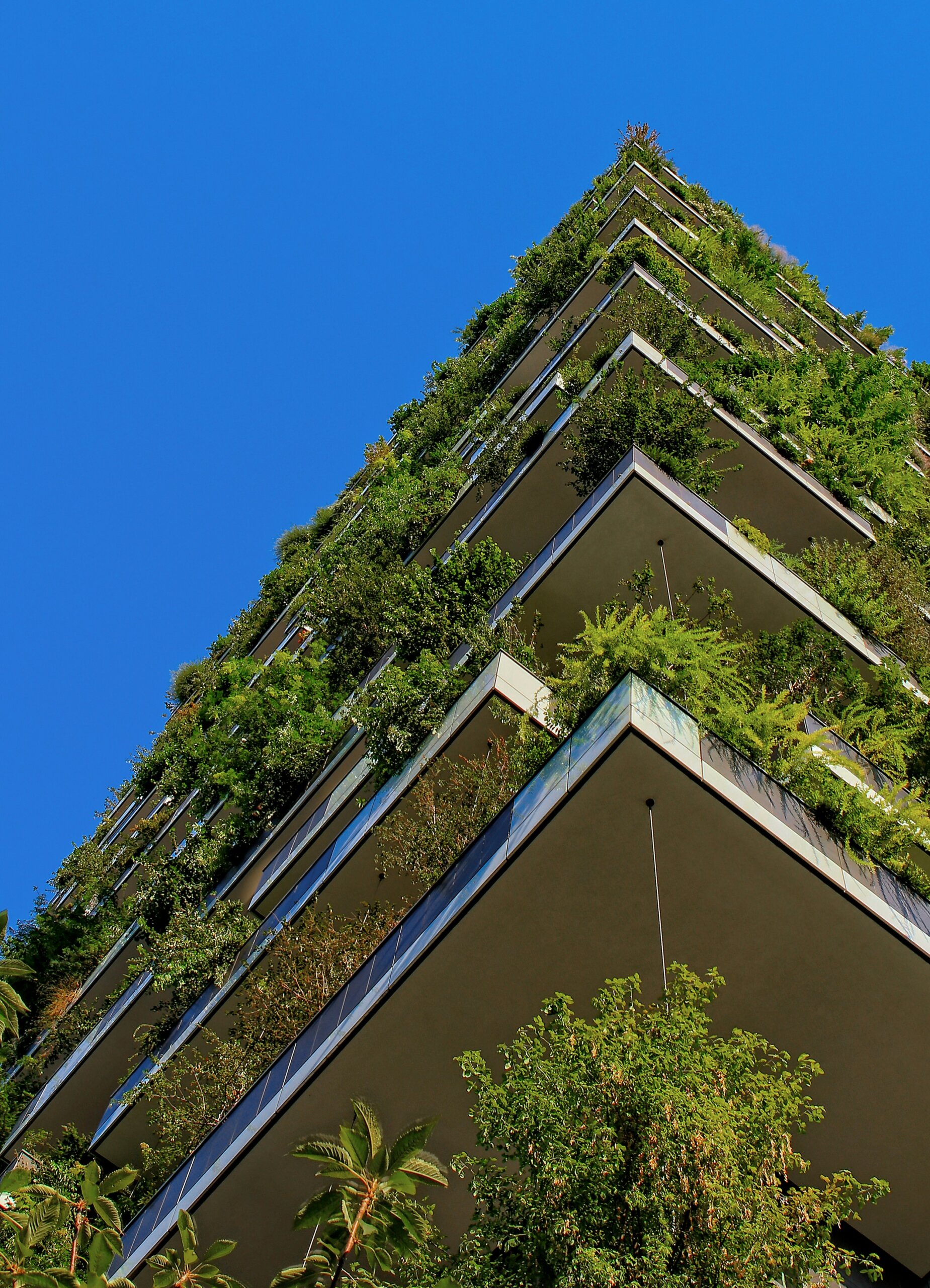The buildings and construction industry is responsible for 37% of the world’s greenhouse gas emissions. The process of designing, manufacturing, and using construction materials like steel, cement, aluminum, and glass — also known as “embodied carbon” — account for 10% of that total.
While the majority of the GHG emissions come from the operation of buildings (heating, cooling, and lighting) in regions where electricity is primarily created by goal and natural gas, that amount will reduce with the decarbonization of the energy sector (moving towards more renewable energy). There are many sustainable practices that help reduce these operational emissions, but there is also another part of construction that often gets less attention but contributes to almost ¼ of the overall emissions: the lifecycle carbon emissions linked to the construction sites — namely, the embodied carbon.
What is Sustainable Construction?
Sustainable construction is not just about building eco-friendly structures; it’s about creating a legacy of environmental stewardship and innovation. The goal of construction site sustainability is to minimize the environmental impact of the project during and after construction.
These are the basic elements of sustainable construction that reduce operational energy:
- Green Building Materials
- Energy-Efficient Design
- Renewable Energy Integration
- Water Conservation and Management
- Socioeconomic Urban Planning
These elements are not only about adopting new construction technologies or materials but also about a fundamental shift in mindset. They represent a move towards long-term sustainability, where the environmental, social, and economic aspects of construction are equally valued and integrated into the fabric of the industry.
As these practices continue to evolve, they pave the way for a more sustainable and environmentally conscious approach to construction that can last for generations to come.
Top 5 Sustainable Construction Practices with a Big Impact
There are many ways to make construction more sustainable and to work towards reducing the sector’s large carbon footprint, but here are the top 5 practices that can have the biggest impact:
1. Green Building Materials
The use of sustainable materials is on the rise. From recycled steel and wood to low-emission concrete and bamboo, these materials are changing the face of construction. They are not only environmentally friendly but also provide better energy efficiency and reduce the overall carbon footprint of buildings.
2. Energy-Efficient Design
Energy-efficient building design is becoming a standard practice rather than an exception. This includes the use of smart glass that adapts to changes in light, advanced insulation techniques, passive cooling strategies, and passive solar building design. These designs maximize natural light and air circulation, reducing the need for artificial heating, cooling, and lighting.
3. Renewable Energy Integration
Solar panels, wind turbines, and geothermal energy systems are increasingly being integrated into building designs. This shift not only powers buildings in a more sustainable way but also contributes to the broader adoption of renewable energy sources, reducing dependency on fossil fuels.
4. Water Conservation and Management
Innovative water management strategies, such as rainwater harvesting, greywater recycling, and efficient irrigation systems, are becoming more prevalent in construction projects. These practices not only reduce water consumption but also lessen the strain on municipal water supplies and mitigate the impact of new buildings on local ecosystems.
5. Socioeconomic Urban Planning
The concept of sustainable urban development is gaining traction, focusing on creating spaces that promote community living and reduce environmental impact. This includes building mixed-use developments that combine residential, commercial, and recreational spaces, promoting walkability, reducing transportation emissions, and enhancing the quality of urban life.

How Do You Measure Sustainability on the Construction Site?
Measuring sustainability on the construction site involves evaluating various aspects of a project to ensure it meets environmental, economic, and social goals. These measurable aspects of a project include material consumption, project duration, waste generation, energy usage, and water usage.
Each of the following can be estimated, tracked, and evaluated to determine the overall environmental impact of the construction project.
Material consumption: To assess material consumption, you should focus on evaluating the types and quantities of materials used in the project. Using sustainable, recycled, and locally sourced materials will minimize environmental impacts. To get a more detailed look at the environmental impact of materials throughout their lifecycle, you can use a Life Cycle Assessment (LCA), which considers extraction, processing, use, and disposal phases, helping to identify areas for improvement in material selection and usage.
Project Duration: Minimizing construction time often reduces the environmental disturbance, resource consumption, and electricity usage, so efficient project management is the best way to track against existing targets and mitigate environmental impacts associated with delays. Construction project management software can help you manage against your timelines, identify potential problems, and pinpoint opportunities for making the construction process more efficient and less resource-intensive.
Waste Generation: Tracking construction waste on your project by conducting audits, creating documentation or labels, and using existing waste management software is the first step in reducing the amount you generate and improving disposal and recycling practices. Sustainable waste management plans are measured by the volume of waste generated, the amount diverted from landfills, and the proportion recycled or reused. Setting quantifiable targets for your project in terms of waste reduction and monitoring progress against these targets are key steps in achieving your sustainability goals.
Energy Usage: Most regulations certifications focus on a building’s operational energy—the amount of energy it takes to run it once it has been built— and there is not much data on the amount of energy consumed during the construction process. To be an environmentally responsible construction business, you should set targets and implement strategies to reduce the amount of energy consumption on your construction site, like replacing old equipment, using LED lights, and installing solar panels. Tracking against your targets and setting expectations on the site from workers and subcontractors is a great way to demonstrate your project’s contribution to mitigating climate change.
Water Usage: Implementing a water management plan at the beginning of the project can help reduce the amount of city water consumed during construction. For example, site cleaning and dust suppression can be done by collecting and using rainwater and installing low-flow fixtures can help minimize water waste.
By addressing each of these components with their respective assessment criteria and measurement methods, construction projects can comprehensively evaluate their sustainability performance and identify areas for improvement. Learn about sustainable construction management software.
Are Sustainable Construction Practices More Expensive?
There are a couple different ways to look at the expense of sustainable construction practices: from the perspective of the end-user responsible for ownership as well as the perspective of the construction business contracted with completing the project.
Being environmentally responsible comes with a price tag, but evaluating the return on investment (ROI) should take into account both money and social responsibility.
The End-User / Owner
The end-user / owner is responsible for the operational energy associated with building(s)— the energy consumed by the building(s) during regular operation and maintenance. The top 5 sustainable construction practices talked about in the section above all come down to design, engineering, and planning. They take into account long-term sustainability goals as well as total cost of ownership targets.
Evaluating the return on investment for sustainability measures involves analyzing the economic benefits, such as energy savings, operational efficiencies, and potential increases in property value, against the costs of implementing such measures.
ROI is calculated by comparing the net benefits (savings and value increases) of sustainability initiatives to their costs over a specific period, highlighting the financial viability of sustainable construction practices.
Elements of a sustainable design may cost more up front; many will ultimately save money over the lifetime of the building(s), and some others may remain expensive but will help a business reach emissions targets or commitments.
The Construction Business / General Contractor
The business contracted with the construction project is usually provided with a design and a budget and it’s their job to stay within it. They are responsible for the embodied energy —direct and indirect energy consumed on site and off site during the construction phase.
They will need to assess whether it makes sense economically to implement sustainable construction initiatives that may require a capital expense (new energy-efficient equipment, for example).
Sourcing locally made materials, implementing waste management initiatives, and setting energy consumption targets will inevitably require more planning, but may not impact the budget as much.
According to a 2014 study, there is a direct correlation between project duration and energy consumption, so improving operational efficiencies with construction management software will positively impact the bottom line as well as the environmental impact.

The Importance of Education & Culture on Construction Site Sustainability
Educating workers, contractors, and supervisors can have a significant impact on construction site sustainability. Creating a culture where reducing the environmental impact of the project is expected and celebrated is crucial to hitting long-term goals, saving money, and becoming a model business for a sustainable future.
Incorporating energy and resource-reducing strategies into regular talks will help workers feel connected to the larger goal and the responsibility the entire sector has to protecting the environment.

